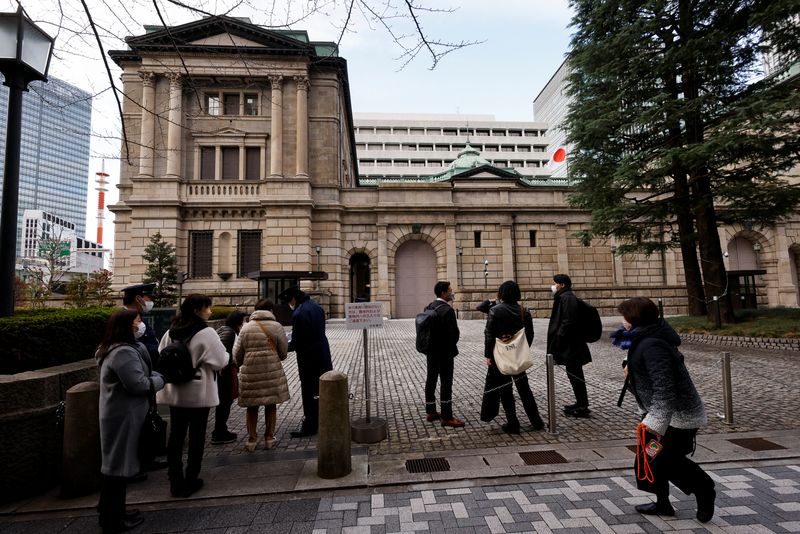
© Reuters. FILE PHOTO: Visitors are seen at the headquarters of Bank of Japan in Tokyo, Japan, January 17, 2023. REUTERS/Issei Kato
By Leika Kihara
TOKYO (Reuters) – The Bank of Japan (BOJ) should consider allowing the longer end of the bond yield curve to move more flexibly even as it maintains ultra-loose monetary policy, Ranil Salgado, the International Monetary Fund’s Japan mission chief, said on Friday.
“Policy should remain accommodative for now,” Salgado told an online briefing, on Japan’s monetary policy. “Our advice has been (for the BOJ) to consider (allowing) greater flexibility at the longer-end yields,” he added.
The IMF sees two-sided risks to Japan’s inflation outlook with “upward surprises” coming from bigger-than-expected wage hikes from companies’ spring wage negotiations with unions, Salgado said.
Downside risks mainly stem from global factors with recent financial shocks, such as the collapse of U.S. banks, raising the prospect of a global recession and putting downward pressure on inflation including in Japan, he added.
Even without such risks on the inflation outlook, the BOJ should allow longer-term bond yields to move more flexibly to ease the strain on financial institutions, Salgado said.
By suppressing the shorter end of the curve such as three to five-year borrowing costs, the BOJ can keep offering sufficient support to the economy even if it allows longer-term interest rates to rise more, he added.
Under yield curve control (YCC), the BOJ guides short-term rates at -0.1% and the 10-year bond yield around 0%. Its huge bond buying to defend an implicit 0.5% cap set for the 10-year yield target has been criticised for distorting bond pricing and making the market dysfunctional by drying up liquidity.
Markets are rife with speculation the BOJ could tweak or end YCC to mitigate such side-effects when incoming Governor Kazuo Ueda takes the helm from Haruhiko Kuroda, whose term ends in April. The BOJ’s first policy meeting chaired by Ueda will be held on April 27-28.





